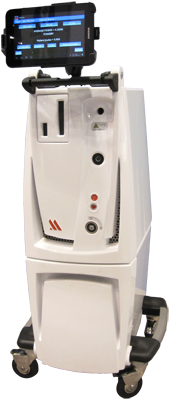 Lasers were invented back in the early 1960s and since that time, doctors and dentists have used them in many different ways. The most recent generation of lasers is now being utilized for dental procedures that range from detecting diseases to treatments for soft-tissues, and even in some hard-tissue procedures like preparing the teeth for fillings. One exciting area where lasers are making a big impact is in the field of periodontal therapies.
Lasers were invented back in the early 1960s and since that time, doctors and dentists have used them in many different ways. The most recent generation of lasers is now being utilized for dental procedures that range from detecting diseases to treatments for soft-tissues, and even in some hard-tissue procedures like preparing the teeth for fillings. One exciting area where lasers are making a big impact is in the field of periodontal therapies.
Why Use Dental Lasers?
You may wonder why more periodontists are using lasers and it’s because these high-tech tools offer several benefits over conventional treatments that were previously used for soft-tissue procedures. Lasers are considered minimally invasive, which means it’s possible to do a treatment with less healthy tissue removal than traditional methods might require. Another advantage of using a laser means the light and heat may be used to cauterize blood vessels and seal off nerve endings during treatment. This translates to less blood loss and pain, which means a patient’s comfort is greatly improved.
Dental Procedures with Lasers
In certain periodontal procedures, using a laser could offer other advantages. The Nd:YAGlaser may be used to clean and sterilize a periodontal pocket, as well as killing off invading bacteria. These types of lasers can aid in the healing process by promoting the reattachment of bone and connective tissue. Using lasers may also cause less shrinkage in the gum tissue. As laser technology and how it is used in clinical applications gets better and expands, more uses will inevitably be discovered.
Lasers: What Are They?
 Today, lasers are everywhere you look and they are so common you can find one being used in various different capacities. However, many people don’t completely understand what a laser is. Laser stands for “light amplification by stimulated emission of radiation.” To explain it in an easier to understand way, it’s a technique for generating a potent ray of visible light (or infrared radiation) by sending energy pulses through a special material such as crystals. The atoms in the material get disturbed and produce a light beam that’s the same wave-length and it’s accurately controllable.
Today, lasers are everywhere you look and they are so common you can find one being used in various different capacities. However, many people don’t completely understand what a laser is. Laser stands for “light amplification by stimulated emission of radiation.” To explain it in an easier to understand way, it’s a technique for generating a potent ray of visible light (or infrared radiation) by sending energy pulses through a special material such as crystals. The atoms in the material get disturbed and produce a light beam that’s the same wave-length and it’s accurately controllable.
Uses for Dental Lasers
More and more often, dental hygienists are being trained to use lasers for periodontal treatments involving gum inflammation. Lasers are excellent at helping to reduce gum inflammation. When used in conjunction with an ultrasonic device, a laser can clean and disinfect the periodontal pocket and surface of the root. Additionally, periodontists and oral surgeons who perform complex procedures are discovering that new laser technology provides some real benefits to patients.
Back to Hygiene Services
